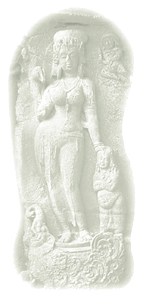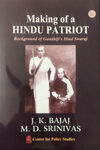MADHYA PRADESH DISTRICT WISE RESOURCE ATLAS PROGRAMME
India is a land of extraordinary natural and human endowments. Nature has provided almost every part of India with abundant resources for the sustenance of a rich human civilisation; and, the people of India, over millennia of intense interaction with their immediate environment, have learnt the most effective ways of gratefully accepting the nature’s bounty.
Notwithstanding the uninterrupted richness and a certain uniformity of natural endowments over almost the whole of Indian land, the detailed hues of nature, of course, differ in different parts. People in different parts seem to appreciate the special endowments of their niche in the world; in every part, they have developed agronomic practices, irrigation techniques, technologies and crafts, architectural styles, social customs and festivals, and much else, to make a world of their own within the larger Indian physical and civilisational ambience.
It is gratifying to observe the special natural endowments, and social, cultural and technological practices of different parts of India. There is indeed poetry in the way nature expresses itself in different parts, and in the way the people mould their life in consonance with it.
It is important in itself to learn the details of the geography, geology, climate, demography, landuse, animals, irrigation, agriculture, crafts, industry, culture and religion of different parts of India. It is essential to learn such details, if we want to make any effective and sensitive developmental intervention in their life and environment. M P District Resource Atlas Programme is designed to collect such technical details for every district, and also to capture the poetry of the interaction between nature and civilisation, as far as possible.
The project began with a pilot study of two district. Resource Atlas of Jhabua was published in May 2008. Following the publication of this Atlas, a larger project toobtain the necessary data for all districts of Madhya Pradesh was initiated. Under this part of the programme, we have obtained and compiled extensive data on different aspects for all districts of Madhya Pradesh. The data has been analysed and detailed tables, graphs and charts have been prepared for all aspects of the data. The main components of the data compiled under the project are the following:
1. Landuse, including land under forests and crops, from 1964-65 to 2007-08
2. Irrigation, cropwise and sourcewise details from 1964-65 to 2007-08
3. Area under major crops, 1964-65 to 2007-08
4. Production of major crops, 1964-65 to 2007-08
5. Yield of major crops, 1964-65 to 2007-08
6. Annul Rainfall, 1964-65 to 2007-08
The data on the above components has been obtained from the annual reports of the Commissioner of Land Records (CLR), Gwalior. We have compiled this data in spreadsheets that are arranged both year-wise and district-wise. The data has been checked in detail for accuracy and consistency. We have also analysed this data in detail, calculated triennial averages, and have prepared tables, graphs and charts for all aspects of the data. We thus have graphs of the changing landuse pattern, of the development of different sources of irrigation, of the changes in production and productivity of different crops, of the changing production per capita of foodgrains and other crops for all districts of Madhya Pradesh. These graphs and tables run from 1964-65 to 2007-08 and provide a detailed and graphic picture of the development of agriculture at the district level in this period. For districts that have bee reorganised during this period, we have prepared separate set of graphs and tables for the undivided districts, and for the reorganised districts, wherever possible.
7. Livestock, 1966-2003
This data is based on the eight livestock censuses conducted from 1966 to 2003. We have prepared bar-chats of the number and composition of domestic animals per household in all the districts. We have also prepared similar bar graphs showing the changing number of different kinds of animals in each district. For the last a few years, we have also given the tahsilwise breakup of domestic animals. Data of the 2008 census has now become available and it is being incorporated into the larger database.
8. Temperature and Humidity
We have compiled data on norms of monthly temperature and humidity for all meteorological stations in every district of Madhya Pradesh on the basis of data obtained from the Indian Meteorological Department (IMD). These norms have been displayed in appropriate climate charts for each district.
9. Rainfall
Monthly rainfall norms have been compiled on the basis of data obtained from the IMD. Annual rainfall data has been compiled for the period 1965 to 2008 both on the basis of IMD data and the data collected by the revenue department and presented in the CLR records. We have prepared charts of the month-wise rainfall and the number of rainy days for each measuring station of every district. We have also graphically represented the distribution of years of good and bad rainfall during the period for which IMD data is available. Using the CLR data for 1964-65 to 2007-08, we have prepared separate graphs of the annual rainfall during the agricultural year for all districts.
10. Demography
The data under this head is compiled on the basis of census records and includes the following aspects:
i. Population and Growth Rates, 1901-2001
ii. Proportion of Children in the Population, 2001
iii. Female-Male Ratio, 1971-2001
iv. Urbanization, 1971-2001
v. Age Distribution of Population, 1971-2001
vi. Scheduled Tribes and Scheduled Castes
vii. Religious Distribution of Population, 1971-2001
viii. Work Participation Rates, 2001
ix. Literacy and Infrastructure of Education, 2001
x. Number of Medical Graduates and Infrastructure of Health, 2001
All this data has been presented in separate tables, graphs and bar-charts for every district.
11. Tahsilwise Data
Much of the demographic data for the current period has been compiled up to the tahsil level. Similarly, livestock data for the current period has been obtained and presented up to the tahsil level. Climate data is generally available for different stations and not tahsils. We have compiled data for all stations in a district.
We have supplemented the long time-series district data for landuse, irrigation and cropping pattern with tahsilwise data for the last 5 years or so. Most of the datahas been checked for consistency with the CLR data. We have also prepared some GIS maps showing tahsilwise variations of different aspects of the district data.
The tahsilwise data is obtained from the District Statistical Handbooks. We have collected the handbooks for the last five years for almost all districts. Coverage and consistency of data varies from district to district.
12. Geographical Data
In addition to the statistical data mentioned above, we have been collecting data on different aspects of the geography of the districts on the basis of remote sensing satellite images available with the MPCST. The following sets of maps have been prepared for every district of the state:
i. Topography, Elevation and Slope
ii. Lithology, Geomorphology and Soil
iii. Minerals
iv. Land Irrigability, Soil Irrigability and Land Capability
v. Groundwater Prospects
vi. Rivers and Waterbodies
vii. Roads and Rails
viii. Landuse including Forest and Cropping Area
These maps have been prepared for all districts. However, in many cases the maps need validation based on ground checking and comparison with terrestrial revenue data. Such validation can be done only on the basis of field visits. This forms a major component of the proposed activities in the second phase.
In addition to the primary maps mentioned above, district level GIS maps showing tahsilwise variations in different aspects of demography, livestock, landuse and cropping pattern, etc., have also been prepared.
13. Archaeological and Epigraphic Data
Madhya Pradesh is very rich in archaeological monuments and epigraphic records. We are in the process of gathering whatever information has been compiled on the monuments and epigraphs of Madhya Pradesh. But, the compiled information covers only a very limited set of monuments and epigraphs. Every district seems to have a large number of ancient structures that have not been recorded so far. Such information can be collected only during the field visits that are part of the second phase of the programme.
14. Historical Data
We are compiling whatever information is available on the district level histories. Our main sources for this information are the district gazetteers. Unfortunately, not much scholarly work has been done on writing local histories. Field visits to the districts reveal many unknown facets of the history and also occasionally lead to scholars who have been working on compiling the history of their districts.
Publications:
Books Published: Madhya Pradesh Resource Atlases
The following Resource Atlases have been published jointly by Centre for Policy Studies and Madhya Pradesh Council of Science and Technology with Dr. J. K. Bajaj as the Editor in Chief.
1. Resource Atlas of MADHYA PRADESH, English (2006).
2. Resource Atlas of JHABUA, English (2008).
3. Resource Atlas of SIDHI AND SINGRAULI, English (2010).
4. Resource Atlas of TIKAMGARH, English (2012).
5. Resource Atlas of DATIA, English (2013), Hindi (in print)
6. Agricultural Atlas of Madhya Pradesh, (Bilingual, in print)



